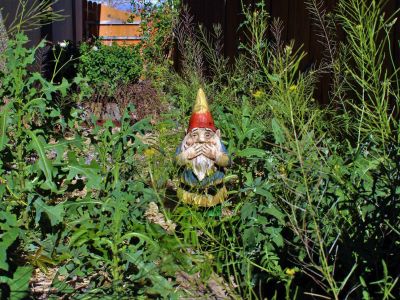What are Weeds?
So what are weeds and where do weeds grow? By definition, a weed is known as “a plant in the wrong place.” For the most part, these plants are known more for their undesirable qualities rather than for their good ones, should there be any. Weeds are competitive, fighting your garden plants or lawn grass for water, light, nutrients, and space. Most are quick growers and will take over many of the areas in which you find them. While most types of weeds thrive in favorable conditions, native types may be found growing nearly anywhere the ground has been disturbed. In fact, they may even offer clues to your current soil conditions. Therefore, many questions concerning “where do weeds grow” can be answered by having an understanding of how they grow by type.
Types of Weeds
There are generally three types of common weed plants in regards to their growing characteristics. These include:
Annual types – Annual weeds germinate and spread by seed, having an average lifespan of one year. These include both winter and summer types. Winter annuals, like chickweed, germinate in late summer/early fall, go dormant in winter, and actively grow during spring. Summer annuals, such as lambsquarters, germinate in spring, grow throughout summer, and are gone with the arrival of cold weather. Biennial types – Biennial weeds complete their life cycle in two years, germinating and forming rosettes their first year and producing flowers and seeds their second year. Examples of these types include: bull thistle and garlic mustard. Perennial types – Perennial weeds return every year and normally produce long tap roots in addition to seeds. These weeds, which include dandelions, plantain, and purple loosestrife, are the most difficult to control.
In addition to their growing type, common weed plants may belong to one of two families: broadleaf (Dicot) or narrow leaf (Monocot). Broadleaf types have larger leaves and grow from tap roots or fibrous root systems, whereas narrow leaf or grasses have long narrow leaves and fibrous roots systems.
Weed Info and Control
There are a number of weed control methods, depending on the weed and the gardener. Here are your options:
Cultural weed control – One of the easiest ways to control weeds is through prevention or cultural control. Close planting in the garden can reduce weed growth by eliminating open space. Cover crops are good for this as well. Adding mulch will prevent light from getting to weed seeds and prevents growth. Mechanical weed control – Mechanical control of common weed plants can be accomplished through hand pulling, hoeing, digging, or mowing (which slows growth and reduces seed formation). While these methods are effective, they can be time consuming. Chemical weed control – Since many weeds, like dodder, ivy, and kudzu, can become aggressive to the point of taking over, chemical control is sometimes necessary, and used normally a last resort. There are numerous herbicides available to help eliminate common weed plants. Natural weed control – Generally, invasive weeds are well worth the trouble of removal. However, some weeds can actually be quite attractive in the garden, so why not consider allowing them to stay. This more natural weed control method results in a lush native environment when given their own designated spot. Some of these ‘good weeds’ include: Joe-pye weed – tall stems of vanilla-scented, rose-colored flower clusters Chicory – brilliant blue flowers Hawkweed – daisy-like blooms on fuzzy stems Queen Anne’s lace – lacy white, umbrella-shaped flower heads
Of course, which weed goes and which weed stays depends on the individual gardener, though a little bit of weed info and control methods makes this decision easier. Note: Chemical control should only be used as a last resort, as organic approaches are safer and more environmentally friendly.
